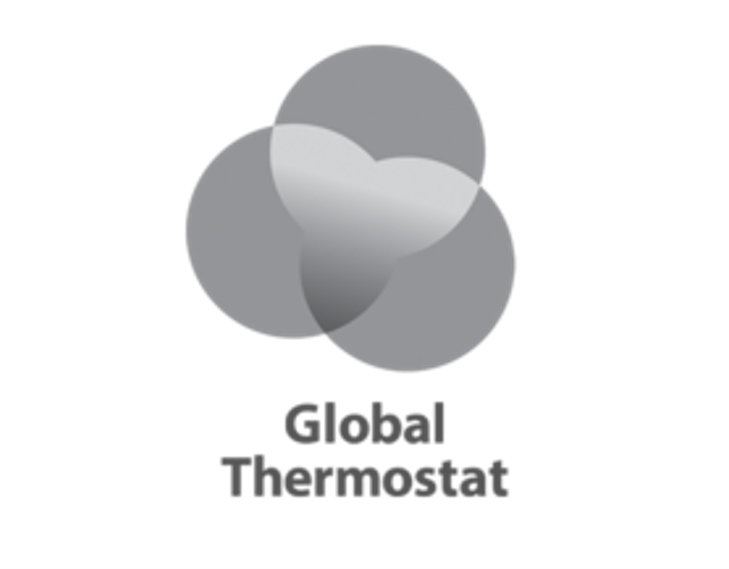123Fab #54
1 topic, 2 key figures, 3 startups to draw inspiration from

On July 2nd 2021, Storegga and Carbon Engineering announced the creation of Europe’s first large-scale carbon dioxide (CO2) direct air capture (DAC) facility in the north east of Scotland. The facility plans to remove between 0.5M and 1M tons of CO2 from the atmosphere each year to help achieve the critical target of zero net emissions by 2050. Players will benefit from Scotland’s extensive offshore storage sites to permanently store CO2 deep below the seabed. This project is largely funded by the UK Department for Business, Energy, and Industrial Strategy to meet the government’s climate goals.
CCUS stands for Carbon Capture, Utilization, and Storage. It is the process of capturing carbon emissions for permanent storage in deep geological formations or for use in the production of fuels, chemicals, building materials, and other products containing CO2. Direct Air Capture is one of the carbon capture technologies that involves capturing CO2 directly from the atmosphere and not from industrial processes like the other methods. It is expected to play a key role in the transition to a net-zero energy system, as it can offset hard-to-abate emissions (aviation, heavy industries) and facilitate a faster transition. There are currently 15 direct air capture plants in operation worldwide, capturing over 9,000 tCO2/year. The main benefits of direct air capture as a carbon removal option are its limited land and water footprint and the possibility of locating plants close to suitable storage or utilization sites, thus eliminating the need to transport CO2 over long distances. However, the major challenge is to identify who is accountable and should pay for it, as the emissions captured are not linked to any precise site. Thus, to cover their costs, DAC companies have to sell the by-product, the CO2, or convert it into various valuable purposes.
Today, two technological approaches are used to capture CO2 from the air:
- Liquid DAC systems pass the air through a chemical solution, such as a hydroxide solution, that removes the CO2 while returning the remaining air to the environment
- Solid DAC systems use sorbent filters that chemically bind to CO2. When the filters are heated, they release the concentrated CO2, which can be captured for storage or use.
Both solid and liquid capture technologies can be powered by renewable energy sources (such as geothermal, solar PV, and wind). Solid DAC can also be powered by recovering waste heat, which signficantly reduces lifecycle emissions. Emissions from the DAC process must be taken into account when measuring the total CO2 impact of the process. A clean energy source is therefore essential to enable both negative emissions and low-carbon fuels.
DAC technologies have improved very rapidly in recently years with increasing financial support. Many public and private players are becoming aware of the need to reverse climate change and are investing in R&D and startups. In August 2020, the leader Climeworks raised $110M from private investors, the largest ever investment in DAC. There are also incentives such as Elon Musk’s XPrize Carbon Removal that challenge designers to develop machines to extract large amounts of CO2 directly from the atmosphere or oceans for $100 million. In terms of government support, the U.S. Department of Energy (DOE) announced in June $12 million in federal funding for six R&D projects that aadvance DAC technology. They are creating tools that will increase the amount of CO2 captured by DAC, lower the cost of materials, and improve the energy efficiency of carbon removal operations.
However, all the support goes to a limited number of players, as the market is very concentrated. Only a dozen or so startups benefit from it and concentrate breakthroughs and partnerships with key players or corporates. A very recent innovative start-up is Co2Rail which seeks to enhance DAC by using train-loaded modules to help improve airflow and thus capture CO2. Their systems are fitted to trains already in regular service. Co2Rail uses the significant amount of wasted energy produced by the dynamic braking system of freight trains to power their direct air capture systems. This unique approach can enable gigaton-scale CO2 capture in an energy-efficient manner, making it affordable for downstream CO2 users to make economical use of the captured CO2. Climeworks has signed agreements with both Carbfix, a pioneer carbon storage start-up, and ON Power, the Icelandic geothermal energy provider, to lay the foundation for a new plant that will significantly scale up carbon removal and storage in Iceland. The new plant will be able to permanently remove 4,000 tons of CO2 from the air per year, safely stored through natural underground mineralization.
Unlike on-site CO2 emission capture, large corporations rely heavily on these startups, rather than developing technologies in-house. They often join forces with them to secure access to this crucial technology. For instance, United Airlines said last December that they would invest in DAC start-up 1PointFive. Occidental Petroleum has signed a partnership with Carbon Engineering to build a plant that will capture up to 1 MtCO2 each year, used in enhanced oil recovery, to be operational in 2023.
However, there are still many challenges and obstacles to overcome in order to implement large-scale DAC facilities. Several large-scale demonstrations are still needed to refine the technology and reduce capture costs. Indeed, DAC is the most expensive carbon capture approach because the CO2 in the atmosphere is highly diluted, which contributes to higher energy needs. Costs and energy needs vary according to the type of technology (solid or liquid) and whether the captured CO2 is to be stored geologically (where it has to be compressed at very high pressure) or used immediately at low pressure. The future cost of direct air capture is uncertain, typically ranging anywhere from $100/tCO2 to 1,000/tCO2, while industrial CO2 capture is more likely to range between $35/tCO2 and $60/tCO2.
In the near term, large-scale demonstration of DAC technologies will require targeted government support, including grants, tax credits, and public procurement of CO2 offsets. Technology deployment may also benefit from corporate sector initiatives and pledges to become carbon-negative, such as Microsoft’s announcement of a $1 Bn climate innovation fund for carbon reduction, capture and removal technologies. Longer-term deployment opportunities will be closely linked to robust CO2 pricing mechanisms and accounting frameworks that recognize and value the negative emissions associated with storing CO2 captured from the atmosphere.
To conclude, carbon removal technologies such as direct air capture are not an alternative to cutting emissions or an excuse to delay action, but they can be an important part of the suite of technology options used to achieve climate goals. For this reason, direct air capture needs to be demonstrated at scale, as soon as possible, to reduce uncertainties about deployment potential and costs, and to ensure that these technologies can be made available to support the transition to net-zero emissions and beyond.
2 Key Figures
18 DAC startups
registered by Pitchbook
DAC market expected to reach 833 million MtCO2 by 2050
The global DAC market was estimated at 6,370 MtCO2 in 2020 and is expected to reach 833 million MtCO2 by 2050, at a CAGR of 240%
3 startups to draw inspiration from
This week, we identified three startups that we can draw inspiration from: Carbon Engineering, Global Thermostat, and Heirloom.

Carbon Engineering
Founded in 2009, Carbon Engineering is a Canadian-based clean energy start-up that uses direct air capture technology at a large scale so it can be permanently and safely stored deep underground or turned into ultra-low carbon synthetic fuels, enabling clients to address their carbon footprint and achieve critical net-zero targets by providing a tool to deliver climate-relevant quantities of permanent carbon removal, and delivering clean, affordable energy to the world.

Global Thermostat
Global Thermostat is a US-based start-up focused on developing technology solutions for direct air carbon capture. It has a patented technology working with CO2 directly from air or from industry smokestacks. The technology uses residual heat to capture more CO2 than power plants or industrial facilities emit. The captured CO2 has multiple applications such as carbonating beverages.

Heirloom
Heirloom Carbon Technologies is an American start-up that aims to remove 1 billion tons of carbon dioxide using carbon mineralization for a cost-effective direct air capture system. The company’s system deploys carbon dioxide removal at a gigaton-scale that captures and processes atmospheric CO2 and minimizes second-order impacts and reduces extraction, thereby helping in restoring the atmosphere using natural processes.
